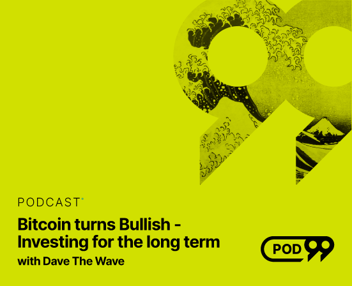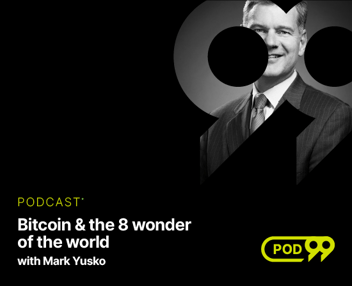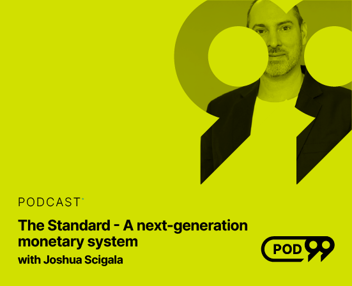In this podcast episode, Andy speaks with Colin Johnson, CEO and co-founder of Freeport, a platform for fractional investment in fine art. They discuss how the company aims to tear down the barrier that has made investing in fine art available only to the wealthy. The first collection will be launched in May and includes four iconic pieces by Andy Warhol. Through Regulation A exemption, investors do not need to be accredited but can only spend up to 10% of their annual income or net worth. Each artwork is an individual offering and works through a Series LLC. Freeport fractionalizes artwork by issuing shares in a series LLC and then tokenizing these shares on the Ethereum blockchain. This increases access to blue-chip artwork for everyday people and unlocks liquidity in fine art, which historically has been illiquid. The long-term vision of Freeport is to be a platform that brings all assets not currently on the blockchain into one place, allowing people to invest in them and experience them virtually. Colin also discusses how rare, expensive collectibles tend to perform well over time and highlights the potential benefits of tokenizing these types of assets.
Freeport - Tokenized Investment in Fine Art
Andy Pickering - Host
You're listening to Pod99, a podcast by Wealth99 that helps the 99% take control of their financial future. We talk to experts from across the alternative asset space, who share their insights on new wealth, how to build it, and how to keep it. Let's get on with the show.
My guest today is Colin Johnson. Colin is the CEO and co-founder at Freeport. Freeport is a platform for fractional investment in fine art. Yes, tokenized works of art. Very interesting. And the tokenized works of art come in the form of an SEC-authorized security token, which I'm sure we'll get into. Welcome to the show, Colin.
Colin Johnson - Guest
Thank you, Andy. Very happy to be here and excited for the conversation.
Andy Pickering - Host
Awesome. Me too. Colin, let's do what we do at the beginning of the show. Could you please introduce yourself? Love to hear a little bit about your story, your background, and what you've been doing in the lead-up to getting involved with Tokenized fine art.
Colin Johnson - Guest
Sure. So my name is Colin Johnson, and I am the CEO and one of the co-founders at Freeport. Before we started Freeport, I was actually at Apple for five years, so I managed marketing for Apple Cash on the Apple Pay team. Before that, I managed a lot of our relationships with the large issuing banks in North America. Chase, Wells Fargo, American Express because I came from American Express to go to Apple and worked on the digital partnerships and development team. So I've been in marketing for quite a while, digital marketing, and payments, but I've secretly been very interested in crypto. Not that secretly, I guess I might say, if you ask my family, I brought it up on just about every family vacation.
I've been looking for quite some time to get into the Web3 space because I find it to be a revolutionary new technology and I think it's going to fundamentally enhance the way that humans interact with each other and the way that we share value and transfer information. So anyways, I've been in the corporate world for quite a while. I've been in the tech space for quite a while. And at some point, it was October of 2021, I decided, you know what, it's time for me to go start my own thing.
The stars aligned in regards to art and having access to some incredible fine art via some of our early advisors and investors, we did a lot of research to identify what the most relevant legal pathway might look like to bring fine art onto the blockchain and allow people to invest in a way they never have before. And that has led me to today where we are close to the launch of our first collection.
Andy Pickering - Host
Fantastic. Well, we're doing similar things here, Colin. At Wealth99, one of the founding principles of what we're trying to do is to assist in making alternative assets available to the 99% of people around the world that perhaps haven't always had these kinds of investment opportunities available. But of course, with the wonderful world of, as you say, crypto, Web3, and blockchain that is enabling asset tokenization. Now, what you guys are building at Freeport is a perfect example of a new platform that is enabling a fascinating new alternative asset investment option. In this case, fine art or what people in the industry call blue chip art. So let's dig into this a little bit, Colin, why is it that you thought that this was a pathway into Web3?
Colin Johnson - Guest
Sure. So fine art, it's a bit of a natural conclusion, or rather there has already been a precedent set. When you look at the NFT collections that already exist out there, people who are excited about Crypto Punks, Bored Apes, Fidenzas, Doodles, all of that good stuff, there was already this association between creating something artistic and having that art sort of live on the blockchain. And we fundamentally, at Freeport, believe that value on the blockchain is more useful than value that's off the blockchain because it can interoperate with other forms of value. And because we knew there was a precedent for artwork already because people get it's a visual medium.
So we decided that's an excellent place to start bringing asset value on chain and allowing folks to invest in a fractional way so that they can get exposure to, as you mentioned, the same kind of assets that, historically, only the very wealthy have had access to. Art is one of those things where you walk into a museum, you look at what's on the walls and you say, I could never access that. I could never own part of that. I just live on a different plane of existence than the people who can own incredibly expensive fine art. And we think that barrier is silly. It's kind of bs, to be frank, and it's time for it to be torn down. So we figured out that there's a legal structure to allow for the communal investment of individual pieces of art.
We knew that people were already familiar with it, and we had a path forward to source some of the most fantastic and rare iconic art that exists out there via some of our early investors. So we decided we should go for it, and it has not been something that we've regretted at all.
Andy Pickering - Host
All right, well, let's hear about some of these wonderful works of art that you're talking about.
Colin Johnson - Guest
Sure. So, before we get into the specific offering, I do want to quickly read a disclosure that we have to read because we are US based and we decided to go the route of SEC qualification and something called Reg A. And when you do that, you have to read a disclosure. It's called testing the waters. So I'll just quickly read this and then hop into our offerings. So an affiliate of Freeport is anticipating making an offering of securities under tier two of Regulation A. No money or other consideration is being solicited and if sent in response, will not be accepted. No offer to buy securities can be accepted, and no part of the purchase price can be received until an offering statement filed with the SEC has been qualified by the SEC.
Any such offer may be withdrawn or revoked without obligation or commitment of any kind at any time before notice of acceptance given after the date of qualification by the SEC or as stated in the offering. Materials relating to an investment opportunity as applicable, an indication of interest, involves no obligation or commitment of any kind. Okay, that is it.
So, to get into the specific offerings themselves, we have four pieces by Andy Warhol that we're going to go out and launch with. And it's kind of an iconic collection. The first piece is a Marilyn, like the hot pink Marilyn that everyone is familiar with. When you think of Andy Warhol, we have one of those classic pieces. We have a double Mickey Mouse, which is one of the rarer pieces that we have. It's got diamond dust on it.
It's a pretty incredible interpretation. I recommend people check out the Freeport app to take a look at it. But then we also have James Dean, Rebel Without a Cause is the formal title of the work. And then we have a Mick Jagger, which is signed by both Mick Jagger and Andy Warhol. So those four pieces make up the first collection. It will be the first of many collections. But we wanted to go out with a bang with pieces that were visually striking from an artist that most folks, even if they're not art historians, would be familiar with. And that's what we'll be doing on May 10.
Andy Pickering - Host
Fantastic. And tell us a little bit more about how it works then. Do you need to be a US-based accredited investor?
Colin Johnson - Guest
Yeah, so here's the best part. You do not have to be an accredited investor. The wonderful thing about Regulation A is that it's technically an exemption to being a security, but it allows you to broadly solicit investments so you do not have to pass any sort of an income or wealth threshold. You can only spend 10% of your income or up to 10% of your net worth in a year. We're not recommending that people do that, to be clear. But that is the only limitation as far as which ones you can purchase. So they are all individual offerings. The way it technically works for those who are interested is that we create these series LLCs. So there will be one LLC for Maryland, one for Double Mickey, one for McJagger, and one for James Dean.
They're very lightweight sort of corporate structures, let's just say, organizational structures. And then we give the asset to that organization and then we issue shares in that organization. And those shares are effectively ownership interest in that series LLC, which has just one asset. And that one asset is the work of art. And then what we do is we take those shares and we tokenize them on the Ethereum blockchain. Now, that's sort of a separate conversation about the crypto part, but as far as what folks are investing in, they're investing in those shares that I just described.
Andy Pickering - Host
Fantastic. And really, in my mind and thinking about this, Colin, there are two big advantages that tokenization unlocks, as we've been talking about, number one, it makes it possible for people who wouldn't normally in the past, they would have seen these Warhols and other blue chip pieces of art in museums, as you said. But investing in those kinds of blue-chip artworks would have been out of reach. So fractionalization, if you like, unlocks that access. And number two, of course, is it unlocks the liquidity in these fine works of art, which wouldn't necessarily come to market very often at all. They're often locked away in private collections or in museums, galleries, that kind of thing.
So it's amazing to think, Colin, that the Ethereum blockchain really does unlock the ability for, as you say, just everyday people to get access to the works of art that they love or feel an affinity to or see value in, but also they can then access that liquidity at any time. They can go in and out. Is that the case?
Colin Johnson - Guest
Yeah. So if you think about how illiquid the legacy art market is, you need to find the right buyer at the right time. You have one seller. For the most part, blue chip pieces of art don't sell more than once every ten years. And who knows if they're realizing the accurate price based on demand, right? Because timing is such a massive factor. Just finding, again, the right kind of unique person is such a massive factor. So fractionalization allows for larger populations of people to come together and to help realize a more accurate price as well. So that is a huge part. And yes, of course, tokenization and fractionalization just inherently adds to the liquidity of whatever the asset is. As far as getting in and out of Freeport, we will have an initial offering that people can invest in.
And then we're developing right now, and we've already signed the contracts for this, but we're developing a secondary market as well that will give people access to the liquidity that you just described, and that should be ready within a few months of launch.
Andy Pickering - Host
Fantastic. And what's the longer-term vision of Freeport? I presume you're looking at other artworks. Are you looking at other asset classes as well?
Colin Johnson - Guest
So it depends on how long of a time frame you want to look at. We have grand ambitions. So Freeport is meant to be a place for us to bring any assets that are not currently on the blockchain onto the blockchain, to allow people to have access to them. Right. These rare, expensive things that people want to be able to invest in but historically they haven't been able to. We want to bring all of those assets into one place and allow people to invest in one place. So to experience those assets in a virtual way in one place. So we're going to have a gallery, for instance, for the artworks that people invest in, that you can then go and hang your artwork in the gallery.
If you're into Web3 and you have NFTs, you can hang your NFTs there as well. If you're not into NFTs, no worries, you don't need to be. You don't even need to create a wallet if you would prefer not to. But what we do want to do is create a space where people can engage with the artwork, right? So we'll allow folks who like the art to see the number of views on their gallery and the artwork in their gallery and also to comment on other people's artwork, right, so you can go into someone else's gallery and sort of engage with the art on that level. The reason that I mention this is we'd like to bring assets onto the Freeport platform over time, and this is over a very large time horizon.
By the way, for the first, let's say 24 to 36 months, we'll likely be focusing exclusively on art, but we'd love to bring other assets on that can be sort of recreated virtually and be sort of deposited into someone's collection such that they can both invest in the shares that represent the underlying asset but also engage in a virtual way with that underlying asset and to sort of share the community elements of collecting with other folks on the freeport platform. So the long-term goal is to have a place where you can actually enjoy your collection with other people as well as having real exposure to the underlying assets behind the tokens.
Andy Pickering - Host
Fascinating, Colin. Fascinating. I said before that the mission here at Wealth99 is of course, to make alternative assets available to the 99%. That is crypto assets, obviously, such as Bitcoin and Ethereum and many of the bigger, more credible crypto token projects. But it's also tokenized precious metals, gold and silver in tokenized form, which again, just makes it easier for people to access precious metals investing, and of course it gives them the liquidity and makes it easier to buy and sell, which is just a no brainer. Of course, what you guys are doing with fine art is very much similar, and we're starting to see it happen with real estate as well. And for listeners who want to check it out, it is Freeport.app. You have photos or pictures of the Warhol artworks. So I do recommend people have a look at those. They're spectacular Warhols. But you also have an interesting chart that shows the performance of what you call the Art Price 100, so you can explain what that is versus the S&P 500 since 2000. So I guess what I'm getting at is the thesis is if you want to beat inflation at the moment, you're not going to do it by just having your fiat currency, U.S. dollars, Aussie dollars, the pound, whatever your local currency is, you're not going to do that by just keeping your money in the bank. Is Bitcoin an option? Yeah, of course. Perhaps it is, especially on a long enough time horizon. Fine art? Is fine art an option here Colin?
Colin Johnson - Guest
So you're hitting the nail right on the head as to the fundamental underlying value proposition of what we're up to. So the Art Price 100 that you see there is reflective of the top 100 artists and the artwork that has been sold by them, right? So you have this sort of trend line or this index to see over time, effectively what blue chip pieces of artwork are doing and how that compares to the S and P 500. And since 2000, the fine art market has consistently outperformed the S and P. Last year, it was particularly striking, actually, the difference wherein fine art went up by 29% and the S and P dropped by almost 20%. And part of what happens here, it's not just fine art, right? When we're in periods of high inflation or down markets, people kind of flee to tangible assets.
So some of the precious metals that you mentioned, other forms of collectibles, automobiles and fine art. But fine art is the most consistent performer, I would say, amongst that entire collection. So as people look for outlets and different places to invest in these kinds of periods, fine art often comes up as an option. But to be clear, it also performs well while the market is doing well, or rather, I have to say, historically has performed well or outperformed the S and P 500. We're not allowed to do forward projections or make any kind of financial guarantees, to be clear, but we can talk about the data and historically how that's played out.
So from our perspective, what we'd like to do is take these assets and fractionalize them so that people can gain access or financial exposure to the upside that fine art sees. And to be clear, there's a lot of fine art that doesn't do well. And generally the way it works is the more expensive the art is to start, the better off it does long term. So it really benefits the uber rich and the uber wealthy. That's why they tend to store so much of their art in the legacy types of Freeports or other types of hard assets that normal people just can't afford generally or historically haven't been able to afford.
So that price that you see, or rather that 8.9% return on the landing page is actually a bit more conservative than you might see some other folks in the fractional art space advertising. But we like to be as honest as possible and as clear as possible and make sure we're not just kind of cherry-picking the timelines that we're working within, but some of those numbers can be significantly higher, last year especially.
Andy Pickering - Host
Thank you, Colin. And interesting how you talk about how it is the existing super rare, super expensive works of art, those are the ones that do hold their value and increase in value. And it's the same with rare cars, right? And of course, famously, to even be able to purchase a new Ferrari, you need to be invited to get onto that list. So you need to be uber-rich. And then if you can buy like, I don't know, pick your rare Ferrari, an F 40 or something 20 years ago, those are triple or more what the purchase price would be, but completely out of reach for the everyday person, I'm sure. Maybe there's something you could look at. Colin, what do you reckon? Fractionalized Ferraris?
Colin Johnson - Guest
If my co-founder Max Goldstein were on right now, he would divert the entire conversation towards Ferraris and take up the next 35 minutes discussing their potential value and worth. He and his family have been deep into them for quite a while. And yeah, to be clear, I think it'd be fun to tokenize that kind of a Ferrari, you could visualize it really well, virtually, right? And you just mentioned they tend to also do very well. But yeah, it's these really expensive, rare pieces of art and other types of collectibles that tend to perform the best. When artwork is once it's worth more than a million dollars, it tends to never drop back below a million dollars. That's not a guarantee, to be clear.
But if you look at the statistics, it's pretty wild how beneficial it is to have a lot of capital when you're trying to generate capital, because you can access things like that. And we're trying to change that.
Andy Pickering - Host
You mentioned NFTs before, Colin and I'd just be interested in getting your thoughts on, I suppose, where you see the NFT market at the moment and potentially how it matures and evolves over the next crypto cycle. On whatever time frame you like because obviously there was an incredible bull market in 2021 and a huge surge of interest into Web3, the metaverse, and NFTs. Since then, of course, and partly due to the crypto bear market, we’ve seen a massive drop off in terms of NFT trading volumes and floor prices, etc. It just seems a little bit doom and gloom in the NFT market at the moment, what do you see happening with NFTs?
Colin Johnson - Guest
Yeah, so I've got plenty to say on this topic. So I've been an aficionado, a fan of decentralization and web3 for quite some time. My general thesis on this, is that the technology of an NFT, the permanent receipt that exists on a blockchain, is incredibly powerful. When people realized that they could own something that no one else could take away from them because their ownership was decentralized and noted across 10,000 different chains and it only existed in their wallets, and people saw that they could also identify other like-minded community members by virtue of what exists in their wallets, right. The fundamental underlying technology of absolute proof that this thing is publicly auditable, it is not changeable, and it absolutely is owned by you. The artwork itself and the PFPs were proof of that. So you saw this massive amount of people sort of flowing into the space because they started feeling what it means to own something that's on a decentralized chain. And because the artwork itself, or even the silly sort of cartoon cat PFPs or like Doodles or things like that, they brought it to life. They said, okay, I now have an object that I can see that is absolute and on chain.
So all of these cultures and subcultures were developed around the promise of that technology and an insane amount of money got poured into it. And what ended up happening was some communities were active and relevant and doing real things and meeting in real life. Other communities were just entirely hype based, right, and just were beholden to Crypto Twitter, and that is still to some degree the case for a lot of those communities. So incredible things can come from technology. And some communities that sort of arose were powerful, right?
You look at what Yuga Labs has done generally, or what Art Blocks has done, they did real things with real people and they allowed them to sort of come together around this community that's focused on decentralized ownership as a technology. And that's incredible. But the artwork was secondary, right? For the most part, it was PFPs that, while interesting, wouldn't necessarily be hanging in a museum. Some pieces of art, however, like I love Fidenzas as an example, I think Tyler Hobbes is a genius. And those are absolute works of art both physically and digitally.
And as you mentioned before, some have continued to show promise over time because they're more focused on the artwork itself and not just sort of the boom and bust cycle of hype that came up around the technology, so we're past that for now. I think we're also on this part of the curve where we're in a lull and there will likely be a recovery to some degree of NFTs. I don't know if it'll be anytime soon that we see the types of pricing that we saw previously, but they'll require people to not just print 10,000 different PFPs. The successful new ones will be required to tell a story or to prove some new technological point, to really attract people over the long term and not just be beholden to hype.
I do expect, though, that there will just be some hypey ones that pop up because they're from creators that historically created impressive things, or because real artists decide to get into the space, or just because the macro economy recovers a bit. And I'm sure there will still be opportunities for folks to kind of invest and make money or lose a lot of money, depending on how they handle it. But the technology, I'll end on this before I ramble on too long. But on the NFT point, the technology is fundamentally incredible. Technology will persist, new ideas will come about, and we'll see a little bit more consistent growth backed by novelty and creativity rather than just hype.
Andy Pickering - Host
Yeah, very well said, Colin, and I think I very much agree with you. But yeah, you're exactly right. Web3 is built on creativity, community, and experimentation, really right out on the frontiers of decentralized finance. And whenever you get these new kinds of industries that bring together finance, money, creativity, and the ability to participate with anyone from anywhere in the world, of course, you're going to get hype cycles. That's just how new markets work. But I'm sure things will settle down for a while and then, who knows, we may well indeed get another wave of innovation. Colin, let's finish off this part of the podcast and then we'll come back and we'll get your thoughts and insights into new wealth. But just before we do that, tell people where they should go to learn all about Freeport and how they can get involved.
Colin Johnson - Guest
Sure. So the best way is to go to Freeport.app and sign up.
Andy Pickering - Host
Awesome. I'm with Colin Johnson, CEO and co-founder of Freeport, the platform that is pioneering tokenized investment and fine art. Fascinating talking to you today, Colin. I like to finish each podcast with a quick round of, I suppose, rapid-fire wealth-building questions. First question, Colin, what do you think is one piece of financial knowledge that should be taught in schools?
Colin Johnson - Guest
I'm going to go with an easy one here. I think it's compound interest and just how magical of an effect that can have long term. I feel a little bit old-fashioned even saying that is too much of a Warren Buffett thing, but it's really important to be aware of.
Andy Pickering - Host
Yeah, I completely agree. And, well, Einstein said compound interest was the 13th wonder of the world after all. Next question, what would you say is your most contrarian view on new wealth, on building wealth?
Colin Johnson - Guest
I think it's okay to take large risks, not all the time, but to take risks even on unproven things. If you're early in your life, right, especially when you're early in your life, I think you still have time to just put everything you've got into the S and P 500 or to continuously kind of build up that account. But I'll give you an example. I bought Bitcoin back in 2014 and Ethereum back in 2017. I want to say, they were not proven, but I had a fundamental belief that as an industry, it was going somewhere, right, that the technology meant something new. And if you can spot the new things that have legitimacy to them, and if you think there's some underlying value, then feel free to take that risk. Don't always be risk averse and you don't always need full information. Now, to be clear, 90% of the time you should collect as much information as humanly possible, but sometimes there are net new things that are worth taking advantage of. That’s risk.
Andy Pickering - Host
Yeah, I agree. So on that point, then, Colin, Bitcoin has now been around for, what is it, 13,14 years, whatever it is, Ethereum nine or ten years. I know I'm putting you on the spot here, but do you get a sense of, let's say, if you were 18 years old today and looking around, what do you think is the next emerging opportunity that would be worth kind of going all in on and taking one of those big bets on.
Colin Johnson - Guest
I still think there's a lot of opportunity in the crypto space to be clear, not financial advice, yes, but I do think crypto and then AI is just a space people should pay attention to. It's unclear who's going to come out on top. Microsoft is deeply in bed with OpenAI right now and Google is likely to come out with some sort of a counterpunch. But in my mind in the current sort of bear market that we're in, the only thing that is very clear to me is that there are many tens of thousands of builders still in the cryptocurrency space and I see this every day on Farcaster and the groups that I'm in.
Other folks who realize that it's a terrible macroeconomic climate but continue to build because they know that at the end of this, there's going to be an incredible opportunity if you have created a platform or an experience that people really care about. So I would tell people to look for the folks who are still building in the Web three space who are building concrete fundamental elements of the future of the ecosystem and that's probably where I'd look if I were to be taking risks right now and I am taking a few risks right now. So that's where my head is at.
Andy Pickering - Host
I like it. This might be slightly off-topic Colin, but I've got to ask because I'm sure you'll have an opinion on it. It's been incredible this year watching the sudden emergence of all these different AI platforms that are now essentially accessible to anyone. And one of the things that is interesting is platforms like mid-journey that can create instant images on demand of anything you can imagine. And now the same thing is starting to happen with video, it's starting to happen with film and with music. So you don't need to even extrapolate out very far into the future to see that we're going to be deluged with AI content that is equally as good as what used to be limited to Hollywood studios, what happens to art in that world.
Colin Johnson - Guest
Yeah, we could start a fresh podcast just on this topic. So I'm dumbfounded at how quickly this has happened and how effective the tools are. I'm wildly happy as someone who fancied himself a creative early in life but never had the actual talents to draw or paint that I can now just sort of give ideas to a computer and have it generate the thing that I was envisioning in my mind. It's going to change everything. And I know folks have probably heard this from a dozen different sources, but I can't reiterate enough how much that is going to be true.
When I look at all the engineers that I know and the developers that I know, they think that they're about four to eight times as effective, not like 40% to 80%, but four to eight times as effective because of these tools, right? Especially because of the sort of sidecar coding elements that have just given so much free time to developers. So people should be aware that these tools are incredibly powerful, and they will fundamentally change the way that we look at society, and they'll fundamentally change the need for artists. Design studios are likely going to go away in the near future. It's very likely that art as a career is going to become less and less lucrative. Right. There is still this obvious demand for real human painting things and real human creativity.
But if you're an artist and you're not one of the very top percent artists, you're very unlikely to find other work to do now, because it can be done by Midjourney. And these programs are also so rapidly advancing, and they'll be able to sort of self-advance in the near future that I would expect a lot of the need for certain types of artists to go away. Now, what I think is interesting about this, too, is that the market will be flooded with a lot of relatively high-quality artwork. People are visually amazed by what can be output by Midjourney or Stable diffusion or Dali. There will be a ton of that.
But when we look back historically as a society, we need to define what made a culture, and we have to look at different anchor points to help us with that. The fine art of the past and the fine art of even, like, today's masters or those of recent history will be called upon more and more as what can harken us back to that period of humans actually creating things and touching things. So I believe that high-quality artwork, and especially the classical pieces, some of which we're putting up for investment on Freeport, they'll become more and more in demand. So the increase in sort of generic artwork or computer-generated artwork, will, in the near term, put artists out of work, almost for sure.
But in the long term, it will mean that the value of the things that, again, real human artists have created will go up as people start to see them as the defining factors of our past. So there will be multiple impacts on the art world. I think that's just the beginning of it. There will be a lot of positives for artists, especially digital artists, who can now be more connected to their customers, and their followers. They can receive revenue on an ongoing basis when their artwork gets traded on different platforms if they're using Web Three. So there are a lot of benefits to blockchain for living artists, and there will be a lot of artists who do really interesting things with AI. Right?
So those insanely creative artists will use it as a tool to further amplify their capabilities and they'll stand out even further. But I do think those are going to be few and far between. So a lot of things are going to change in the art world and they're going to change rapidly. And we'll all have to be ready for that.
Andy Pickering - Host
Yeah. Great points, Colin. It's fascinating indeed. You make a great case for why in this future world, and we're already there in this future world of infinite digital content, the tried and tested blue-chip fine art classics, of course, will just become more and more rarefied and valuable. That makes sense. And at the same time, I think, again, in this world of unlimited digital abundance, what's the other thing that is potentially going to be valuable? Well, it is provable digital scarcity, 21 million Bitcoins. I think you kind of make the case for why Bitcoin is valuable in that world as well. Right?
Colin Johnson - Guest
Yeah, fundamentally I agree with that, especially because to the same point, you're talking about rarefied art. Bitcoin now has, I believe, 13 years of history. As you mentioned before, time flies during COVID so it's hard to count the years, but it has this artificial rarity or sort of an arbitrary number of 21 million bitcoin, but it has also persisted for 13 years. The Lindy effect has not failed. Yeah, precisely. So now not only does it have that scarcity, but it also has this sort of provenance of history, which means that other folks will introduce new chains and they will have similar sort of restrictions, but they won't have the proven history and the proven again, provenance. So Bitcoin is an excellent example of something that exists in that rarefied realm.
And it's hard for me to see someone coming in and supplanting that in any kind of meaningful way. We'll see. I'll knock on wood.
Andy Pickering - Host
We'll see. And listeners, the Lindy effect simply means that, look it up on Wikipedia. I think it says something like that the longer something exists, the more powerful or the more credible it becomes, essentially. So, of course, famously, gold, which has been part of how humans understand money, has a very powerful Lindy effect because gold has been used to store value for hundreds or thousands of years. So when you compare BTC to gold, bitcoin, of course, 13 years looks very short. And that's how gold bugs and I guess TradFi people like to criticize Bitcoin, but in this kind of AI world that we suddenly live in, 13 years is actually a long time and bitcoin suddenly looks stable and traditional by comparison, which is amazing to think about.
Thanks again for sharing your thoughts, Colin. Look, it's been an absolute pleasure talking to you today. Again, just finish off by telling people where they can go to get involved with the Freeport offering.
Colin Johnson - Guest
Sure, yeah. So, as a reminder, people should go to Freeport.app on May 10. On May 10, we will have four incredible investment offerings backed by Marilyn Monroe, a double Mickey, a James Dean, and a Mick Jagger.
Andy Pickering - Host
Well, there you go. That was Colin Johnson from Freeport. How good was that? Fascinating talking to Colin. And isn't it interesting how just like the Wealth99 mission is to make alternative assets accessible to the 99% by harnessing the unique power of blockchain asset tokenization. Well, there are all sorts of other interesting platforms such as Freeport springing up to offer these amazing new investment opportunities. Tokenized Andy Warhols. Amazing to see.
https://freeport.app/













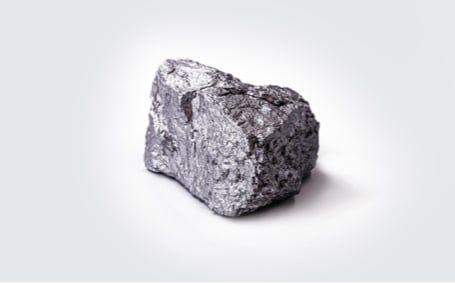
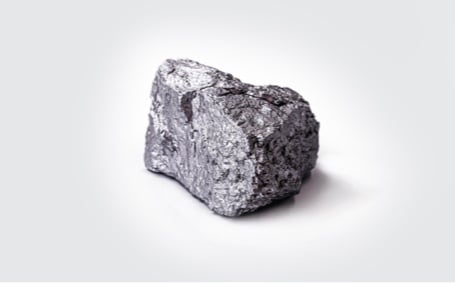

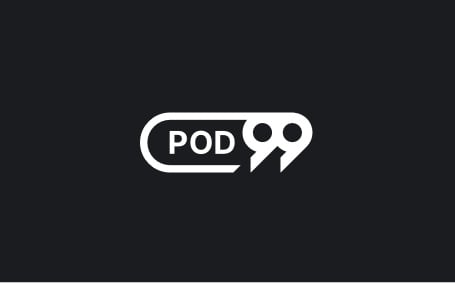




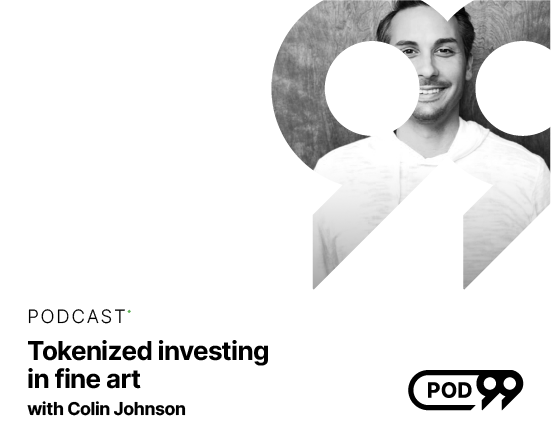


.svg)
.svg)
.svg)

